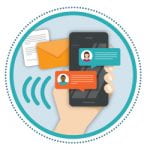
Module 2: Systems
Educators are embedded in systems. These systems are not only complex; they are also changing. As school leaders, how do you make sense of systems? And how do you address health in the context of this complexity and constant change? System dynamics can help answer these questions and uncover the systems, structures, and policies needed for a healthy school.
Systems matter
To provide the high-quality education that students will need to lead productive lives, many individuals and groups within school buildings and in the broader community must work together to address those factors that determine whether students come to school ready to learn. Did they sleep well the night before? Did they eat breakfast? Do they suffer from chronic illnesses like asthma, trauma, or depression? Do they live in substandard housing? Do their families have sufficient income? Are they safe?
But trying to address any one of these issues alone is rarely successful, because no one’s life is just about one thing. Our lives are characterized by complexity. Unfortunately, we don’t always have a full enough picture of that complexity — of how things actually work — to come up with the best solutions.
That’s where thinking in terms of systems can help. Rather than asking which program or service can fix some single, isolated problem, systems thinking asks how the various issues and activities within a school or district are connected and how the process that emerges from those connections leads to specific outcomes.
This module helps you understand the key concepts involved in a system and shows you how to use Group Model Building (GMB), a method of system dynamics that uses the wisdom of people from multiple perspectives to explain how the systems work. Thinking together about systems can help you reach better outcomes because your actions are based on a realistic picture of how things actually work.
System dynamics for education
Whatever role you play in education, you are constantly immersed in systems: If you’re a parent, you navigate how to register a child for a new school year. If you’re a teacher, you determine which behavioral services students should be receiving outside of the classroom. If you’re a principal, you build a positive environment that supports students, families, and staff. And if you’re a superintendent, you constantly track attendance rates and standardized test scores.
The systems that make up education are not only complex, but they are also changing. Students transition. Staff members leave or change positions. Curriculum develops. Policies adapt.
The tools of system dynamics help educators address these complex and changing systems by:
- Recognizing problems as dynamic, or changing over time
- Exploring where problems come from
- Understanding the structures that generate problems
- Telling a more complete story about how problems work
“A system is a set of things — people, cells, molecules or whatever — interconnected in such a way that they produce their own pattern of behavior over time.”
— Donella Meadows, Thinking in Systems: A Primer


